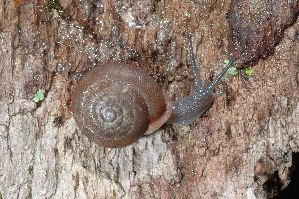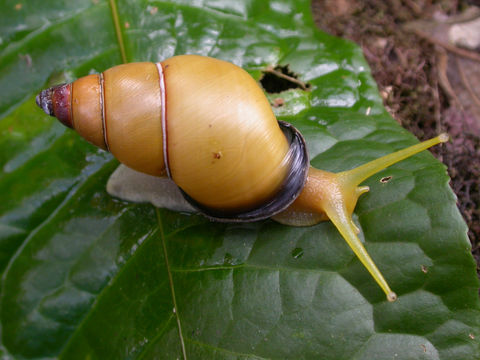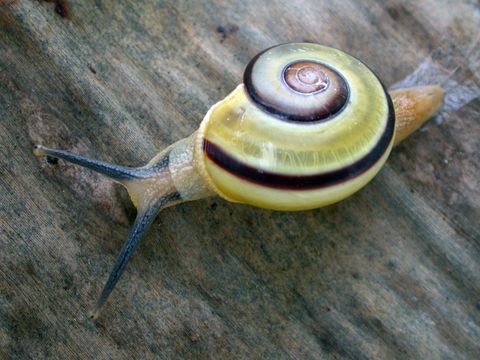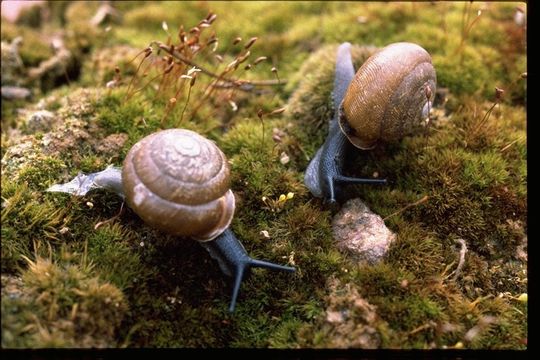Classification of Patera appressa
 Domain: Eukarya
Domain: Eukarya
Kingdom: Animalia
Phylum: Mollusca
Class:
Gastropoda
Order: Stylommatophora
Family: Polygridae
Genus: Patera
Species: Patera appressa
Domain: Eukarya
Eukaryotic organisms are different from the other two
domains of Bacteria and Archaea because they contain eukaryotic
cells. Bactera and Archaea are prokaryotic, meaning they
have no nucleus or membrane-bound organelles. Eukaryotes
have a nucleus that contains genetic material, membrane-bound
organelles, and can make multicellular organisms.
Kingdom: Animalia
The kingdom Animalia differs from all other kingdoms because
they are eukaryotic and generally multicellular, which separates
them from bacteria and protists (Nave, 2012). Animalia also are
heterotrophic meaning they rely on other organisms for food and
do not possess cell walls, unlike plants, algae, and fungi
(Nave, 2012).
Phylum: Mollusca

The phylum Mollusca are invertebrates that generally contains
organisms with a bilaterally symmetric soft body split meaning
when cut in a saggital plane contain right and left halves that
are identical (Bunje, 2003). The body is composed of a head region for sense
organs, mantle to secrete the hard outer shell, and muscular
foot for movement, as well as having a hemocoel, which is a
reminant of a true coelom (Bunje, 2003).
Class: Gastropoda
 The class Gastropoda contains organisms with a well developed
head, which includes a more advanced central nervous system,
pigmented eyes to sense dark and light, and tentacles for
feeling their surroundings (Bourqin, 2004). Gastropods also have a unique
developmental state called
torsion (Vaughan, 2008).
The class Gastropoda contains organisms with a well developed
head, which includes a more advanced central nervous system,
pigmented eyes to sense dark and light, and tentacles for
feeling their surroundings (Bourqin, 2004). Gastropods also have a unique
developmental state called
torsion (Vaughan, 2008).
Order: Stylommatophora

In order to be in the order Stylommatophora, organisms must contain lungs since they are terrestrial and
breathe air (ZipcodeZoo, 2012). The vast majority of
species in this order are both land snails and slugs (ZipcodeZoo,
2012). Organisms also have retractable tentacles that
contain eyes at the tips (Eol.org, 2012).
Family: Polygyridae
 The family Polygyridae contains only land snails
that breathe air that are also generally found in North American
and some Carribean islands (ZipcodeZoo, 2012). They also
do not contain a dart apparatus for reproduction and the muscles
that control the eyes and the pharynx are united as one
(Eol.org, 2012).
The family Polygyridae contains only land snails
that breathe air that are also generally found in North American
and some Carribean islands (ZipcodeZoo, 2012). They also
do not contain a dart apparatus for reproduction and the muscles
that control the eyes and the pharynx are united as one
(Eol.org, 2012).
Genus: Patera

There are 12 other snails that fall under the
genus of Patera (Eol.org, 2012). In order to be in this genus,
species have to have a single tooth in their main shell opening
and an imperforate shell, which means there is no holes in the
shell itself (Eol.org, 2012).
Species: Patera appressa
 Patera
appressa
is named for its shell shape, as the word Patera
means
"saucer" in Latin. Patera appressa is considered
a macro-snail because of its large size, which helps in
dispersal of the species (Douglas, 2011).
Patera
appressa
is named for its shell shape, as the word Patera
means
"saucer" in Latin. Patera appressa is considered
a macro-snail because of its large size, which helps in
dispersal of the species (Douglas, 2011).